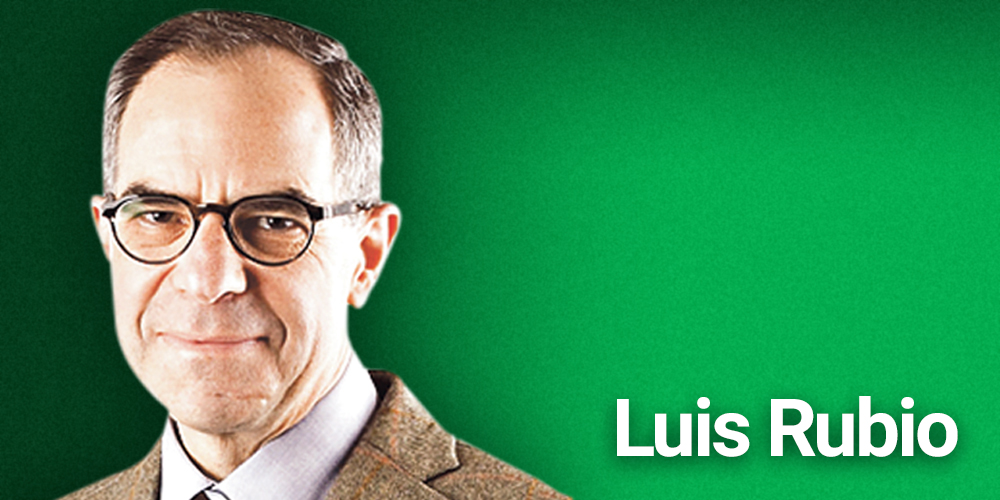 “The history of Mexico,” says a well-known analyst, “is first and foremost the history of personalized power -of the concentration of all the levers of power and resources- in the hands of a leader standing above society, of a succession of leaders and their regimes. Breaking away from the post-PRI era required a leader who could act as a battering ram to destroy the old order. That person had to be an outstanding and charismatic politician with the courage to break with the past and force the political class and state authorities to leave the past behind. That person needed a strong personality and the ability to lead. However, to introduce a system based on political rivalry and competition requires quite a different kind of leader, one prepared to ’abdicate the throne’ and transfer at least some executive power to other institutions.”
“The history of Mexico,” says a well-known analyst, “is first and foremost the history of personalized power -of the concentration of all the levers of power and resources- in the hands of a leader standing above society, of a succession of leaders and their regimes. Breaking away from the post-PRI era required a leader who could act as a battering ram to destroy the old order. That person had to be an outstanding and charismatic politician with the courage to break with the past and force the political class and state authorities to leave the past behind. That person needed a strong personality and the ability to lead. However, to introduce a system based on political rivalry and competition requires quite a different kind of leader, one prepared to ’abdicate the throne’ and transfer at least some executive power to other institutions.”
Even when a new society and new institutions began to emerge –continues the author-, the government played by the old rules. If the fundamental principle of democratic elections is that “the rules are clear, but the results uncertain,” the elite was determined that the rules should be uncertain and a result favorable to itself guaranteed. Rather than make provisions for an alternative regime and rotation, the elite stressed continuity. Samuel Huntington’s observation that two election cycles are sufficient for a country to become democratic proved not to apply to Mexico, where regular elections provided a smokescreen for backsliding from political liberalization.
Society was too inexperienced to develop independently into a civil society. The new occupants of the presidency had come to power on a wave of democratic enthusiasm, but not only had they no intention of promoting the development of civil rights and liberties, they systematically obstructed the process, turning their backs on the democratic forces that had helped their rise to power.
The technocrats supposed that introducing a capitalist economy would be enough, and they ignored the need for new institutions and the crucial importance of subordinating the state to the rule of law. As a result, they reconfirmed Adam Przeworski’s conclusion that without stable liberal institutions, a sustainable liberal economy is impossible. Indeed, in the absence of viable independent institutions and the rule of law, economic reforms can become a destabilizing factor that pushes the ruling class toward authoritarianism in order to defend its interests and its property.
Could this leader and this elite, given their origins and ignorance of anything other than the old political system, have behaved differently? The reforming governments did not foresee the consequences of their endeavor, but all reformers start by shaking the foundations of the status quo without knowing where their actions will lead. If they could see into the future, no doubt any would have second thoughts.
In truth, all Western leaders made a double mistake, first, by relying on the local reformers and believing that they would guarantee a successful transition, and, second, by emphasizing the economy and neglecting the role of political reform.
Mexico’s present or future? Or is it its recent past? The analysis is revealing and looks impeccable. However, none of it is about Mexico, even if it appears to have been written recently by an expert well versed in its reality. In fact, the author, Lila Shevtsova, is talking about the failed transition in her own country, Russia, in a book about the first two decades of post-Soviet Russia (“Lost in Transition). All I did was pick a few fragments and replace Mexico where it said Russia (or Kremlin) and “a leader” or president, where the author wrote the name of one of Russia’s presidents.
What’s remarkable is that the similarities, but also the differences, of a process of profound political and economic change as that that has characterized both societies, reflects the complexity of the challenge that the reformers undertook in each nation without really understanding the difficulties which would have to be faced down the road and, particularly, the forces they were unleashing.
It’s clear that both nations had to break away with the past because the status quo ante proved unviable and unsustainable. Neither the USSR nor Mexico launched their process of reform on ideological grounds; rather, they did so due to the paralysis and series of crises that each had experienced. The result was, as the title of the book says, a lost transition that, while having advanced, did not reach the promised port of landing. The new status quo has proven uncertain and remains far removed from a liberal and competitive economy, characterized by development, stability and democracy.
* Luis Rubio is chairman of the Mexican Council on Foreign Relations and of México Evalúa-CIDAC. A Spanish version of this Op-Ed appeared first in Reforma’s newspaper print edition. Twitter: @lrubiof


